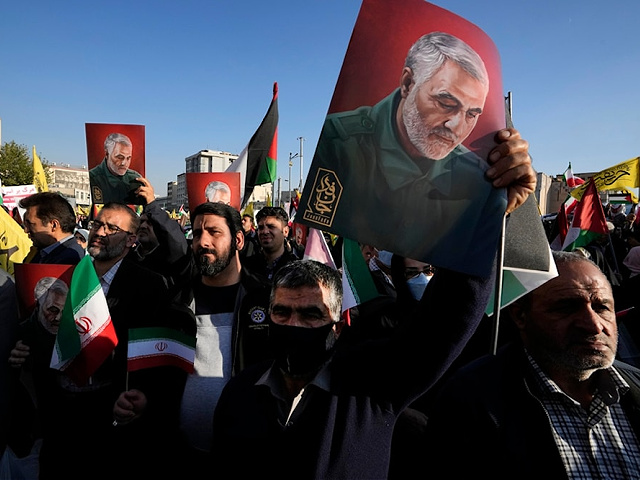Top News
Iran Announces International ‘Manhunt’ for Soleimani Bombing Conspirators

The Iranian government said on Thursday it has already arrested 35 people in connection with the deadly bombing on January 3 in Kerman, the hometown of terrorist mastermind Gen. Qasem Soleimani of the Islamic Revolutionary Guard Corps (IRGC), but an international manhunt for more suspects is underway.
The January 3 bombing involved two devices detonated near Soleimani’s grave at a memorial event marking the fourth anniversary of his death. Soleimani was killed by a U.S. drone strike in Baghdad, Iraq, in 2020 while he was coordinating terrorist attacks against American troops and attempting to organize an assault on the U.S. embassy.
The double bombing had the hallmarks of an Islamic State terrorist attack, which frequently involves using one blast to panic a crowd and draw first responders to the scene, only to murder even more victims with a second detonation. Iran said 93 people were killed by the bombing, nine of them children, plus almost 300 injuries.
While the Iranian regime floated conspiracy theories that the United States or Israel was behind the bombing, ISIS did indeed take credit for the atrocity the following day.
This photograph taken on January 3, 2024, shows where two explosions in quick succession struck a crowd marking the anniversary of the 2020 killing of Guards general Qasem Soleimani. (TASNIM NEWS/AFP via Getty Images)
Iranian officials continued to insist the ISIS bombers were “U.S.-backed,” and top officials — including Supreme Leader Ayatollah Ali Khamenei — vowed revenge.
“Cruel criminals must know that they will be strongly dealt with from now on and undoubtedly there will be a harsh response,” Khamenei said last week.
On Wednesday, Interior Minister Ahmad Vahidi told reporters at a cabinet session that the “main elements” of the terrorist attack have been taken into custody, including the alleged mastermind, a Tajik national. Vahidi said more arrests would be forthcoming, including some outside Iran’s borders.
On Thursday, the Iranian Intelligence Ministry released a statement identifying the bombing mastermind by the alias “Abdullah Tajiki.”
The statement said “Tajiki” crossed from Tajikistan into Iran on December 19 in the company of a woman and child, who were his “cover” for terrorism. He allegedly constructed the improvised explosive devices (IEDs) used in the operation and then departed Iran two days before the Kerman bombing.
The Intelligence Ministry identified one of the suicide bombers who carried out the attack as a 24-year-old Tajik national who used the name “Bazirov Israeli.” As the name implies, he allegedly had both Tajik and Israeli citizenship.

Iranian demonstrators hold posters of the late Revolutionary Guard Gen. Qassem Soleimani, who was killed in a U.S. drone attack in 2020. (AP Photo/Vahid Salemi)
Bazirov Israeli was supposedly recruited to ISIS through the encrypted messaging application Telegram, came to Iran via Turkey with the assistance of “human traffickers,” and received training at an ISIS camp in Afghanistan.
The statement claimed that Israeli, evidently second-in-command of the operation as well as being one of the bombers, and Tajiki were originally planning to blow up Soleimani’s mausoleum, but they changed their minds after sizing up its “strict and multi-layered security” and opted for a nearby detonation instead.
The Intelligence Ministry said the identity of the second suicide bomber remains unknown. ISIS itself named the bombers involved in the “dual martyrdom operation” as “Omar al-Mowaid” and “Sayefulla al-Mujahid.”
According to the ISIS statement, the two were dispatched to bomb Iran because Soleimani was “involved in the killing of thousands of Muslims in Iraq and Syria,” by which the Islamic State meant its own fighters. Soleimani was instrumental in helping the regime of dictator Bashar Assad retain control over Syria by fighting Syrian rebel forces, though he did little in the war against the ISIS “caliphate.”
ISIS added that the Iranians murdered by its bombers deserved to die because they were Shiite Muslims performing “polytheistic rituals.” ISIS follows an extremist brand of Sunni Islam that considers memorial ceremonies a form of idolatry.
Read the full article here


















